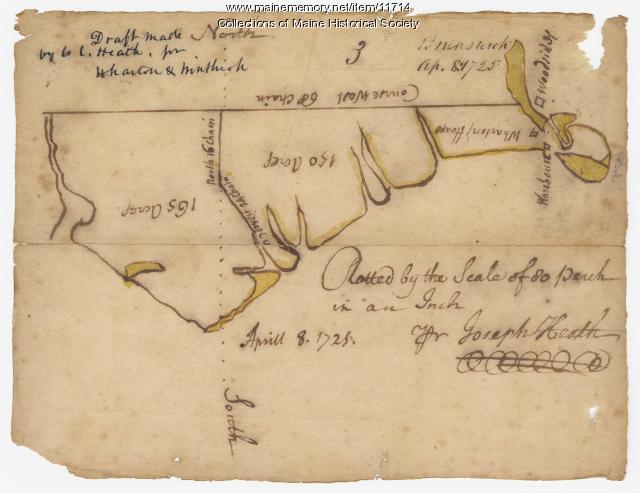Keywords: brunswick
Item 11723
Contributed by: Maine Historical Society Date: 1747-07-06 Location: Brunswick Media: Ink on paper
Item 11714
Contributed by: Maine Historical Society Date: 1725-04-08 Location: Brunswick Media: Ink on paper
Item 109369
Town Hall at Brunswick, Brunswick, 1882
Contributed by: Maine Historical Society Date: 1882 Location: Brunswick Client: Town of Brunswick Architect: Fassett & Stevens Architects
Item 116447
Brunswick Savings Institution, Brunswick, 1937-1945
Contributed by: Maine Historical Society Date: 1937–1945 Location: Brunswick Client: Brunswick Savings Institution Architect: John Howard Stevens and John Calvin Stevens II Architects
Exhibit
The Swinging Bridge: Walking Across the Androscoggin
Built in 1892 to entice workers at the Cabot Manufacturing Corporation in Brunswick to move to newly built housing in Topsham, the Androscoggin Pedestrian "Swinging" Bridge or Le Petit Pont quickly became important to many people traveling between the two communities.
Exhibit
Settling along the Androscoggin and Kennebec
The Proprietors of the Township of Brunswick was a land company formed in 1714 and it set out to settle lands along the Androscoggin and Kennebec Rivers in Maine.
Site Page
Kings Landing Historical Settlement
View collections, facts, and contact information for this Contributing Partner.
Site Page
Beyond Borders - Mapping Maine and the Northeast Boundary - Borderland Essays
"… state of Maine and the Canadian province of New Brunswick. Boundary between United States and New Brunswick, undatedMaine Historical Society…"
Story
Scientist Turned Artist Making Art Out of Trash
by Ian Trask
Bowdoin College alum returns to midcoast Maine to make environmentally conscious artwork
Story
The $ame Band
by Mike Laskey
Maine's punk rock band, 1977
Lesson Plan
Longfellow Studies: Henry Wadsworth Longfellow & Harriet Beecher Stowe
Grade Level: 9-12
Content Area: Social Studies
As a graduate of Bowdoin College and a longtime resident of Brunswick, I have a distinct interest in Longfellow. Yet the history of Brunswick includes other famous writers as well, including Harriet Beecher Stowe. Although they did not reside in Brunswick contemporaneously, and Longfellow was already world-renowned before Stowe began her literary career, did these two notables have any interaction? More particularly, did Longfellow have any opinion of Stowe's work? If so, what was it?
Lesson Plan
Maine's Acadian Community: "Evangeline," Le Grand Dérangement, and Cultural Survival
Grade Level: 9-12
Content Area: English Language Arts, Social Studies
This lesson plan will introduce students to the history of the forced expulsion of thousands of people from Acadia, the Romantic look back at the tragedy in Henry Wadsworth Longfellow's famous epic poem Evangeline and the heroine's adoption as an Acadian cultural figure, and Maine's Acadian community today, along with their relations with Acadian New Brunswick and Nova Scotia residents and others in the Acadian Diaspora. Students will read and discuss primary documents, compare and contrast Le Grand Dérangement to other forced expulsions in Maine history and discuss the significance of cultural survival amidst hardships brought on by treaties, wars, and legislation.



















